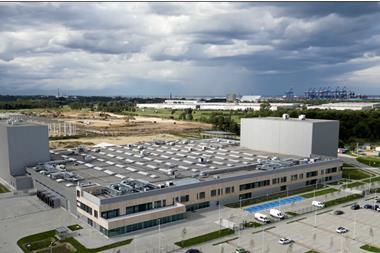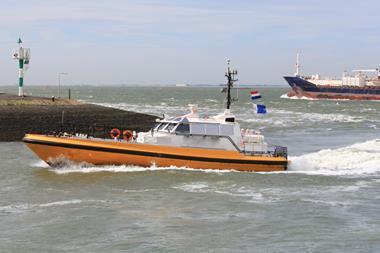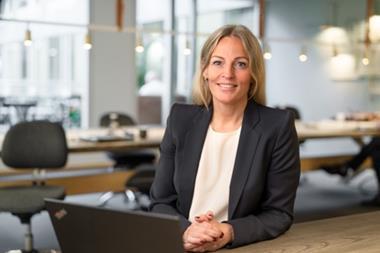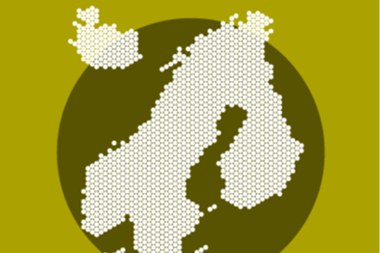SWEDEN - Tredje AP-fonden (AP3), one of the four Swedish buffer funds, has produced a net first-half return of 5.2%, but warned pension benefits and entitlements will not be indexed in line with wage growth for some time as the pension system's balancing mechanism will have to keep going until into 2010.
Figures from AP3's annual report showed net income for the fund in the first six months of 2009 was SEK9.4bn, (€926m) helping the value of the fund to increase by SEK7.6bn to SEK188.6bn at the end of June.
The fund's equity portfolio generated a return of 9.5% in the first half of the year, closely followed by a 4.1% return on fixed income holdings, while the active management strategy produced a return of 1.3% or SEK1.8bn, of which alpha strategies contributed SEK700m.
However, the overall positive performance of listed equities of 7.7% was offset by AP3's
Disappointing alternatives portfolio which returned -3.1%, while real estate produced -1.3% and private equity holdings returned -16.9%.
That said, the fund revealed its portfolio of new strategies - which is still under construction but includes life science equities, insurance-related securities, secured bank loans and agricultural land - achieved the best return of the period with a figure of 25.4%.
AP3 confirmed at the start of the year it had adopted a "relatively cautious strategy", and completed diversification of its real estate portfolio with 50% ownership in Hemsö Fastigheter. But by the end of June, the asset allocation was 48.1% in equities, 5% in private equity, 35.6% in fixed income, 8.4% in real estate, 2.6% in new strategies and the remainder in alpha strategies.
Despite the positive interim result, against -8% in June 2008, Kerstin Hessius, chief executive of AP3, said the pension system had been "severely tested" in 2008 and the dramatic fall in asset values in the AP funds, combined with low growth in pension assets meant the pension stabilisation system would be activated in 2010.
She revealed the capital generated by AP-funds 1-4 would be used to bridge the gap between pension contributions and disbursements, as 2009 had seen the first net outflow in assets since the system was introduced as the baby-boomer generation retired.
Although this is an expected development, as the buffer funds aim to manage surpluses and cover deficits in the pay-as-you-go system, the outflows mean the AP-funds contributions will be lower than investment returns so it is "likely the system will take longer to return to balance so that pension entitlements and pensions can be indexed in line with inflation".
Elsewhere, Sjunde AP-funden (AP7) revealed the default Premium Savings Fund (Premiesparfonden) had returned 11.8% in the first half of the year, to bring the value of the fund to SEK69.67bn.
AP7 manages the default fund in the Premium Pension System (PPM) alongside the Premium Choice Fund (Premievalsfonden) which is one of around 800 funds available in the PPM but with a lower cost target.
Figures showed the Premiesparfonden saw outflows of SEK 2bn, or 3%, in the first half as savers switched funds, although by the end of June the default fund had increased in value from SEK 62.65bn in December 2008 to SEK 69.67bn, equivalent to a 26.1% share of the total premium pension capital and making it the largest fund in the PPM.
By the end of the first half, it had an asset allocation of 82% in equities, of which 52% were global, 20% in Sweden and 10% in emerging markets, while 8% was allocated to interest-bearing investments and 10% in alternatives.
The fund, which had 18 external investment managers, reported a total return of 11.8%, with emerging market and Swedish equities positing the best returns of 42.1% and 24.5% respectively, while the biggest loss was from private equity with a return of -4.2%.
Global equities returned 7%, closely followed by nominal bond investments which achieved 3.6%. However, real interest bonds and hedge funds both lost 0.4%, while the currency hedging and active currency management returned -2.5% and -1% respectively.
Meanwhile, the Premievalsfonden returned an even better 20.2%, as the value of the fund increased from SEK 1.69bn at the end of 2008 to SEK 1.98bn six months later, equivalent to 0.7% of the total PPM assets, to make it the 21st largest fund in the system.
The higher return could be attributed to the slightly higher allocation to equities in the fund at 90%, of which 50% are global, 20% Swedish and 20% emerging markets, while the final 10% is invested in alternatives including private equity.
Figures revealed the fund had 16 external managers at the end of June and the positive result was driven by a 58.9% return on emerging market equities, 24.3% from Swedish equities and 7.2% on global shares, although this was offset by currency hedging and active currency returns of -3.9% and -1% respectively while private equity achieved -3.5%.
If you have any comments you would like to add to this or any other story, contact Nyree Stewart on + 44 (0)20 7261 4618 or email nyree.stewart@ipe.com












No comments yet